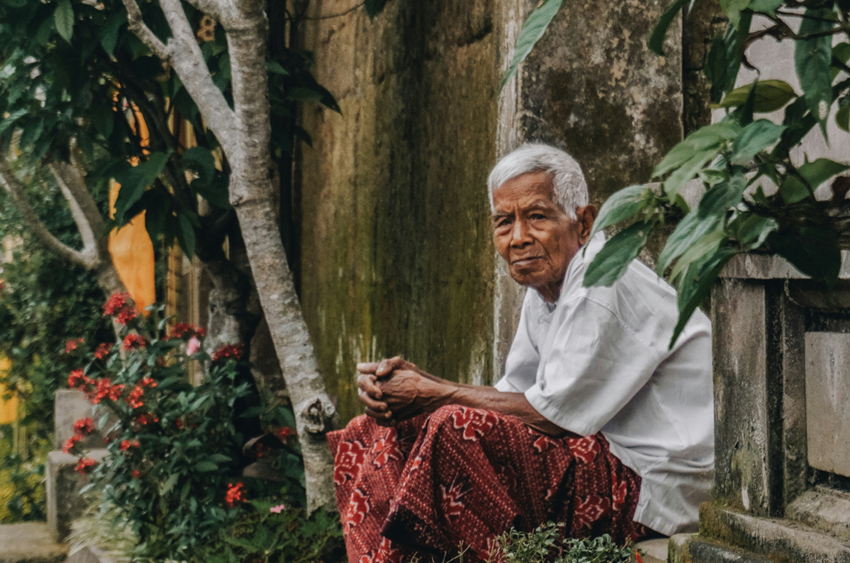
Introduction
Indonesia is gradually becoming an ageing society. According to the latest data, the number of elderly citizens in Indonesia has reached 31 million people, or about 11.04% of the total population.
This number is predicted to increase by around 20% by 2045, while by 2050 elderly citizens might number 70 million or 21.2% of the total population.
A rapidly ageing population carries bad luck in terms of national economic performance.
As of 2019, only one in eight elderly individuals received a regular pension in Indonesia – usually former civil servants and retired military personnel. Fast forward to 2024, this figure further declined to one in 20.
The low coverage of pensions in the social protection system for elderly citizens has caused many of them to continue working in low-paying jobs.
In August 2024, the head of the National Population and Family Planning Agency, Hasto Wardoyo, revealed that the peak season of demographic dividend in the nation, which was heavily tipped to come to fruition in 2030, has in fact passed. Consequently, the window of opportunity for Indonesia to elevate its status into the developed country category is getting smaller.
There have been a few talks about the probability of a second demographic dividend if elderly citizens were able to acquire a substantial amount of savings. The hope is that this would provide further boosts to the economic growth by 2045.
Beyond Jakarta, governments at regional levels are also expected to facilitate this objective through the implementation of Presidential Regulation Number 88 of 2021 on National Strategy of Elderliness. This document establishes five priorities to achieve the welfare of all elderly citizens, which are social protection, health improvement, development of elderly-friendly public spaces, enhancement of civic institutions and elderly rights compliance.
Therefore, the government at all levels, including subnational governments, is encouraged to take measurable and necessary steps to anticipate the potential for demographic disaster.
It is crucial to ensure the social security protection of the elderly people. In order to achieve that, Indonesia’s subnational governments (SNGs) – such as governors, mayors and regents – must play a more proactive role.
Gaps
Since reformasi, decentralisation has become a fundamental principle in the nation’s governance system and bureaucratic reform.
An important consideration is the often-forgotten obligation of numerous SNGs to take good care of their elderly residents. By exercising regional autonomy powers, these SNGs have most of the necessary tools to distribute annual revenues to improve the prosperity of the elderly citizens.
That additional income could mean life or death to many of them, particularly those who have lived under the poverty line for years.
Available data support this. Two provinces with the highest number of the elderly, the Special Region of Yogyakarta (17% of the national elderly population) and East Java (14.4% of the national elderly population), are each showing a staggering statistical fact. Just 10.2% of the elderly in Yogyakarta and 3.6% in East Java regularly receive pension funds.
This paints a bleak picture of the state of welfare of the elderly citizens. If Indonesia sincerely aims to put an end to the probability of demographic disaster once and for all, this shortfall must be dealt with as soon as possible.
It is true that those respective regions have already made some effort over the years. Yogyakarta currently has 40 community-based social welfare bodies which provide monthly empowerment programmes for the elderly, combined with a social security programme for senior citizens who happen to be excluded from any other government’s aid.
However, the so-called social security programme is insufficient, only catering to around 8000 poor senior citizens with each individual receiving Rp300,000 (US$18.08) per month. This figure is far below the real numbers of the elderly in the entire province.
East Java has implemented a similar social security programme since 2019. Every intended recipient receives around Rp2m (US$120.7) per year, with an estimated total of recipients approximately around 50,000 people.
Nevertheless, those programmes are simply not enough. A robust ageing policy requires the government to reach as many older agents as possible, facilitated by the presence of a comprehensive and systematic database.
Unfortunately, this is another classic problem in Indonesia’s bureaucratic system. Multiple state institutions store different data that could complicate the policymaking process, despite the presence of an integrated data-management service called the One Data Initiative. The integration process has been relatively slow.
To overcome those obstacles, SNGs must begin to take over the policy initiative. If every SNG has become fully aware of the incoming threat of demographic disaster, it would not be difficult to decipher which actions must be undertaken.
Paradigm Switch
Last year I conducted research in Jakarta, Surabaya and Medan, which are among the regions with the highest budgets. My study found that all three regions had more than enough fiscal capability to finance an innovative policy called minimum income guarantee for the elderly.
This is a fresh form of an almost-universal (or categorical) basic income-based policy that only excludes former civil servants and retired military/police personnel because they already receive a monthly pension from the state.
As a way of transforming this policy idea into an executable programme, the executive branch alone is insufficient. It is necessary to conduct some measured and systematic political lobbying towards the legislative branch as well. The designated goal here is that each of the city’s and/or special region’s parliamentary bodies would support the policy implementation by passing a specific regional law to complement the executive branch’s policy design.
In order to reduce the probability rate of political resistance, it is necessary to ensure the budget allocated must not surpass 16% of annual revenue realisation in each municipal/metropolitan area.
This calculation is based on a comparative assessment concerning mandatory spending on education (minimum allocation of 20%) and health sectors (10%).
If the minimum income guarantee policy budget exceeds the funding portion on education, this situation will trigger a considerable risk in terms of public perception. People would see that the government is prioritising elderly citizens over children, a narrative that would bring significant political resistance, especially from various members of local parliament.
Moreover, the issue of welfare and prosperity has always been intertwined with the quality of health service. A growing discourse about eliminating mandatory spending in the health sector from every subnational budget across Indonesia has a bigger chance to disrupt the improving level of health quality of elderly citizens.
In political terms, this minimum income guarantee for the elderly could be framed as something that would be able to bridge the gap to some extent.
The numbers look positive. By calculating and analysing Jakarta’s annual revenue in regions in the past five years, I arrived at the estimation that by 2032, its expected actual revenue would have reached a point of Rp100t (US$6.49b). By 2035, the amount would increase to Rp110t (US$7.14b).
This is more than enough to finance the aforementioned programme for the elderly.
Accelerating Poverty Reduction
The potential of this minimum income programme, which could facilitate the elderly group’s ascent above the poverty line, is a subject worth discussing.
By 2032, Jakarta’s expected actual revenue would have reached a point of Rp100t (US$5.93b). By 2035, we predict that the amount would have been at Rp110t (US$6.53b) and the number of Jakarta’s elderly residents would reach 1,640,000. Thus, it is quite realistic that every eligible individual, in today’s calculation, gets Rp10.66m (US$633.30) a year (15.9% of its estimated overall actual revenue that year) or Rp889,000 (US$52.79) a month.
If we compare the money to the Jakarta’s poverty line as of September 2024 (Rp846,085 or US$50.24/capita/month), the income alone would have enabled eligible recipients to get themselves above the poverty line.
In the case of Surabaya, the projected annual actual revenue by 2032 would be at least Rp13.8t (US$895.42m). Three years later, the city’s revenue realisation would likely reach Rp15.2t (US$986.26m), whereby approximately 530,000 Surabaya elderly residents could be included in the recipient list of the programme.
Therefore, any eligible person in Surabaya could get as much as Rp4.5m (US$292) a year or Rp375,000 (US$24.33) a month (15.7% of Surabaya’s expected overall actual revenue that year). Considering the city’s poverty line stood at Rp565,284 or US$34.08 per capita per month as of September 2024, this income would equal 61.9% of that threshold.
Medan could attain approximately Rp8.3t (US$539.82m) in terms of actual revenue realisation by 2032. By 2035, the city’s actual revenue might reach Rp9.1t (US$591.63m). Concurrently, around 465,000 elderly residents would be able to receive the minimum income. The distributed nominals would be at Rp3.12m (US$202.44) a year or Rp260,000 (US$16.87) per month (15.9% of the city’s expected actual revenue that year).
Medan’s poverty line, on the other hand, stood at Rp674,427 or US$40.67 per capita per month as of September 2024. The amount received by each eligible resident would equal up to 40.03% of that point.
We can observe that Jakarta has the fiscal capability to lift all poor elderly out of its regional poverty line, while Surabaya and Medan could offer substantial coverage for eligible participants who live below their respective provincial poverty lines.
President Prabowo Subianto is elderly himself. At 73, he has everything at his disposal to implement a robust and effective ageing policy. However, the probability of this happening is still distant. His landmark programme at this moment is the free nutritious meal, reflecting a mainstream way of thinking of almost exclusively maximising productive-age population.
So far, the country has not updated its outlook by considering the impact of those elderly citizens who are highly educated, technologically literate, financially independent and accustomed to thinking innovatively on the future growth of Indonesia’s economy.
Prabowo’s administration could address this problem by considering two things. Firstly, it must acknowledge that the elderly population has equal rights with the productive-age population. Secondly, it must acknowledge that the elderly’s welfare is key to maximising the demographic bonus.
Though it might seem contradictory at first, the elderly population is a national development asset who can still contribute to the economy if the state knows which policy could support and stimulate them.
Funds allocated for the minimum income guarantee programme would be difficult to embezzle because prospective recipients are only required to show a national ID card to ensure they are truly residents of the area. After that, funds are transferred directly to the recipient’s account periodically.
Conclusion
Unfortunately, at this stage, the elderly’s welfare remains overlooked. In terms of demographic dividend, their potential contribution is also ignored.
Though an error, there is still some time to rectify this fallacy. A reform in the national outlook, which connects aspects of health, economic empowerment and elderly citizens’ intellectual contribution – while being fully supported by SNGs – must be undertaken before the demographic bonus window is completely closed.
Failing to do this would only elevate the state and regions’ fiscal burden to provide health financing and social security for the elderly. Every SNG in Indonesia could improve the elderly’s welfare and help deliver the long-awaited social justice for them.
